How to Repair Dresser Drawers
If you’re like most people, your dresser drawers are an essential part of your wardrobe. You probably have at least a few pieces of clothing that you wear on a regular basis that are tucked away in those drawers. But what do you do when one or more of the drawer pulls breaks off? Luckily, there is a simple fix that anyone can do. So read on to learn how to repair dresser drawers.

What Is a Dresser Drawer?
A dresser drawer is a type of storage furniture that is typically used in bedrooms to store clothing and other items. Dresser drawers are usually made of wood and have several different compartments, each of which can be used to store different items.
While dresser drawers are most commonly used in bedrooms, they can also be used in other rooms of the house, such as the living room or the kitchen. Dresser drawers are an essential piece of furniture for many people, as they provide a convenient place to store belongings while keeping them organized.
Why It’s Important to Repair Dresser Drawers?
Damaged dresser drawers can cause several problems in your home. First, they can be unsightly and make your dresser look old and worn. Second, damaged drawers can be difficult to open and close, making it hard to access your clothes. Third, damaged drawers can also pose a safety hazard, as they may come off their tracks and fall on someone.
Finally, damaged drawers can make it difficult to keep your clothes organized. By repairing your dresser drawers, you can avoid these problems and keep your dresser looking its best.
How to Repair Dresser Drawers Step by Step Guide
Step 1: Inspect the Drawer for Damage
Start by taking a close look at the drawer to determine what kind of damage needs to be repaired. If there are any cracks or holes in the wood, you’ll need to fill them in before proceeding. If the drawer is sagging or warped, you may need to reinforce it with additional supports.
Step 2: Remove the Drawer from the Dresser
Once you have inspected the drawer for damage, you will need to remove it from the dresser. This will give you better access to the back of the drawer and make it easier to repair.
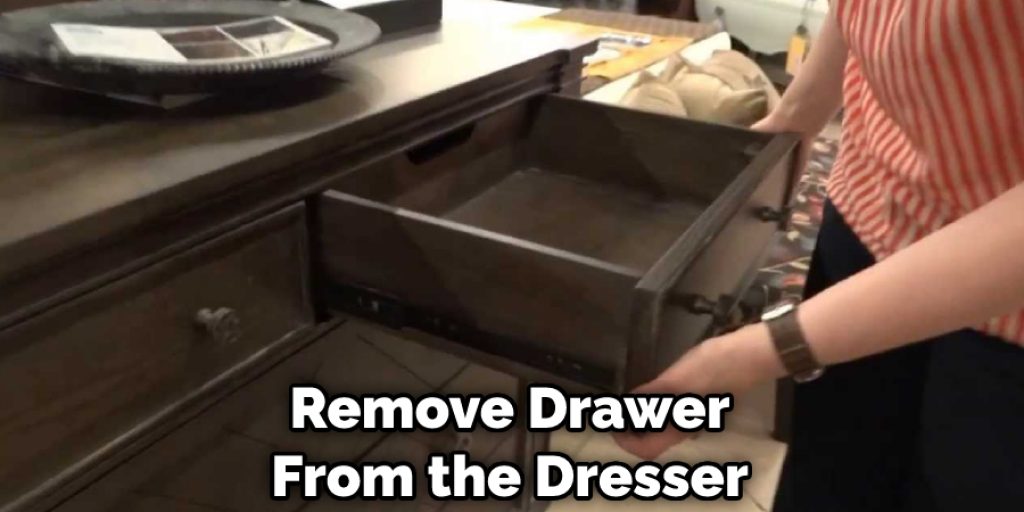
Step 3: Repair the Damage
If there is any damage to the drawer, now is the time to repair it. First, use wood glue to fix any cracks or holes in the drawer, and use clamps to hold the pieces together while the glue dries. Next, if there are any loose screws, tighten them up. Once the drawer is repaired, sand down any rough edges and apply a fresh coat of paint or varnish.
Now that the drawer is repaired, you can move on to step four.
Step 4: Reattach the Drawer Pulls
If the drawer pulls were removed in step two, now is the time to reattach them. First, find the screws that hold the pulls in place. You may need to purchase new screws if you can’t find them. Once you have the screws, line up the holes in the drawer and pull with the holes in the drawer. Screw the pulls back in place.
Step 5: Test the Drawer
Before putting the dresser back together, it’s important to test the drawer to make sure it works properly. Open and close the drawer a few times to make sure it moves smoothly. If there are any sticking points, make adjustments as necessary.
Step 6: Enjoy Your Repaired Dresser Drawers
Now that you’ve learned how to repair dresser drawers, it’s time to put your new skills to the test. Get started by finding a dresser needing repair and following the steps outlined above. With a little elbow grease, you’ll have your dresser back in tip-top shape in no time!
What Are Some Common Problems with Dresser Drawers?
Dressers are one of the most versatile pieces of furniture in the home, providing both storage and style. However, dresser drawers can also be a source of frustration, as they often stick or become difficult to open.
Common causes of dresser drawer problems include misalignment, warped boards, and buildup of dirt and debris. Fortunately, a few simple steps can be taken to fix dresser drawer problems. By aligning the tracks and cleaning out the drawer slides, it is often possible to get dressers working smoothly again.
In addition, regular maintenance such as dusting and Waxing the drawer slides can help prevent future problems. With a little effort, dresser drawers can be made to open and close smoothly, providing years of trouble-free use.
What to Do if Your Dresser Drawer Falls Apart
Dresser drawers are subjected to a lot of wear and tear. Over time, the constant opening and closing can cause the drawer to become loose, making it more likely to fall apart. If your dresser drawer falls apart, there’s no need to panic. With a few simple tools, you can easily fix the problem.
First, remove the drawer from the dresser. Then, use a screwdriver to tighten any loose screws. Next, check the drawer slides for any damage. If necessary, replace them with new ones. Finally, reattach the drawer to the dresser and test it to ensure it opens and closes smoothly. With a little effort, you can have your dresser drawer working like new in no time.

How to Fix a Broken Drawer Slide
If your drawer slide is broken, there’s no need to call a repairman or buy a new one. Instead, you can easily fix the problem with a few simple tools. The first step is to remove the drawer from the slide. Next, use a screwdriver to remove the screws that hold the slide.
Once the screws are removed, you can pull the slide out of the drawer opening. Once it’s removed, take a look at the roller wheels. You can purchase new ones if they’re damaged at your local hardware store. To install them, place them in the slots on the side of the slide and secure them with the screws you removed earlier.
Once the new wheels are in place, reattach the slide to the drawer and test it out to make sure it works smoothly. With a little bit of elbow grease, you can easily fix a broken drawer slide and avoid costly repairs.
How to Fix a Stuck Drawer
A stuck drawer can be a frustrating experience. Whether it’s a dresser drawer that refuses to open or a kitchen drawer that won’t close, this problem is often caused by misaligned hardware. Fortunately, it’s usually a fairly easy issue to fix. In most cases, you’ll need to make a few adjustments to the screws and hinges. Here’s a step-by-step guide to fixing a stuck drawer:
- Check the screws. First, take a look at the screws that are holding the drawer hardware in place. If any of them are loose, tighten them up with a screwdriver. This will often solve the problem.
- Adjust the hinges. If the screws are all tight, then the next step is to adjust the hinges. Loosen or tighten them until the drawer opens and closes smoothly.
- Replace worn-out hardware. In some cases, worn-out drawer hardware is the culprit. If this is the case, you’ll need to replace the old hardware with new pieces. Again, this is a relatively easy task that can be completed with just a few tools.
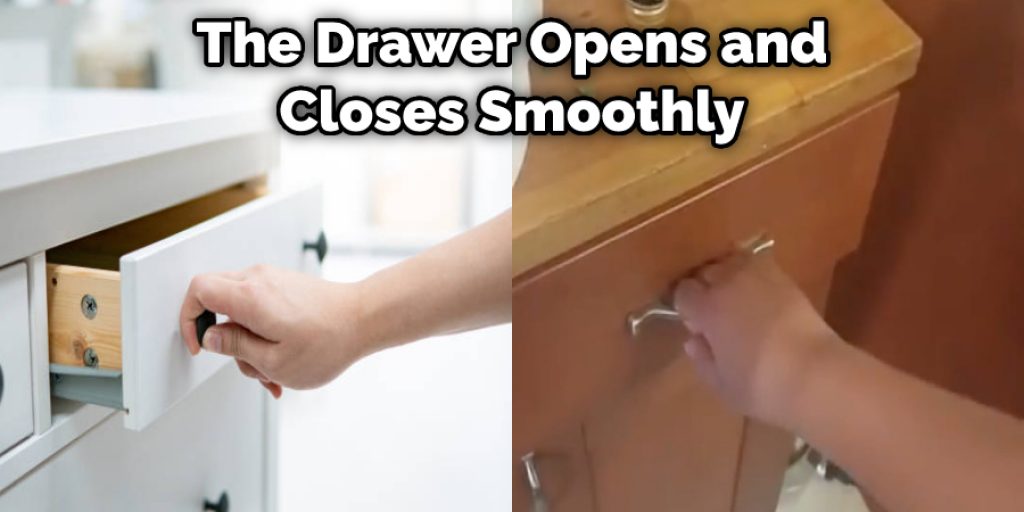
With these steps, you should be able to fix most stuck drawers. However, if your problem persists, it’s best to consult a professional. They can help identify the root of the problem and recommend the best course of action. Keep reading for more information about how to repair dresser drawers.
How To Replace a Damaged Drawer Front
If you’ve got a damaged drawer front, don’t despair! With a little time and effort, you can replace it with a new one that looks just as good as the original. Here’s what you’ll need to do:
First, remove the old drawer front. This will usually involve unscrewing a few screws or hinges. If the damage is localized to one area, you may be able to salvage part of the old drawer front and use it as a template for your new one. Otherwise, you’ll need to measure the opening and cut a new piece of wood to size.
Next, attach the new drawer front to the drawer box. This can be done with screws, nails, or adhesive. Suppose you’re using screws and pre-drill holes to avoid splitting the wood. Once the new drawer front is in place, add any hardware (knobs or handles) attached to the old one.
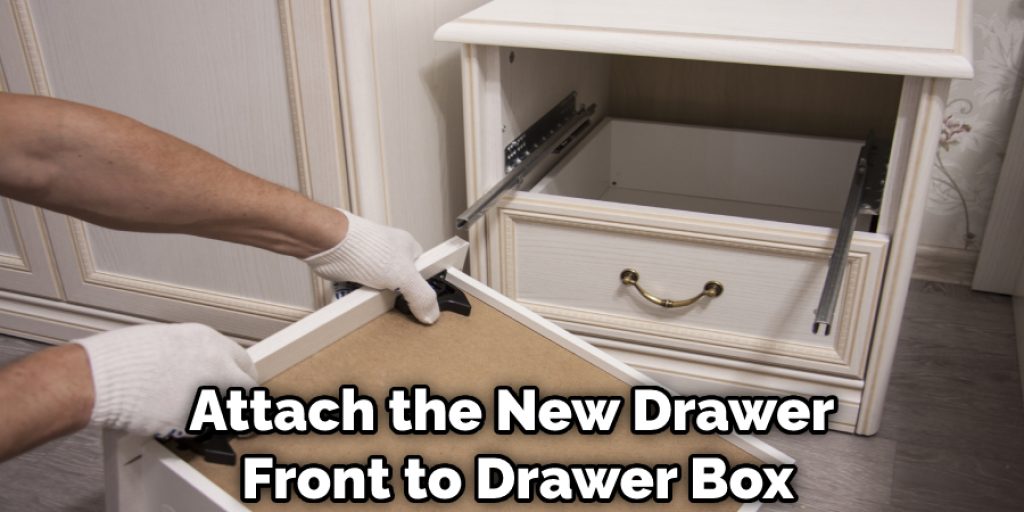
With that, your damaged drawer front will be as good as new!
How to Repair a Broken Dresser Drawer Handle
A broken dresser drawer handle can be a nuisance, preventing you from opening the drawer and accessing the contents. Fortunately, it is relatively easy to repair a broken handle, and all you will need is a screwdriver and a few replacement screws.
First, remove the screws that attach the handle to the drawer. Then, line up the replacement handle with the holes in the drawer and insert the screws. Once all the screws are in place, tighten them until the handle is securely attached. You can have your dresser back in working order with just a few simple steps.
Tips for Keeping Your Dresser Drawers in Good Condition
Your dresser drawers have a lot of use, so keeping them in good condition is important. Here are some tips for keeping your dressers looking their best:
- Dust regularly. Dust can build up on the surface of your dresser, making it look dull and dirty. To prevent this, dust the surface of your dresser with a soft cloth or dusting brush.
- Wipe up spills immediately. For example, if you spill something on your dresser, wipe it up as soon as possible. Stains can be difficult to remove once they’ve had time to set in.
- Use a coaster for glasses and mugs. Glasses and mugs can leave rings on your dresser if they’re not placed on a coaster. Always use a coaster when placing drinks on your dresser to avoid this.
- Keep drawers organized. A messy drawer can be more difficult to keep clean than an organized one. To keep your drawers tidy, invest in some drawer organizers or dividers. This will help you keep things in their place and make it easier to find what you’re looking for.
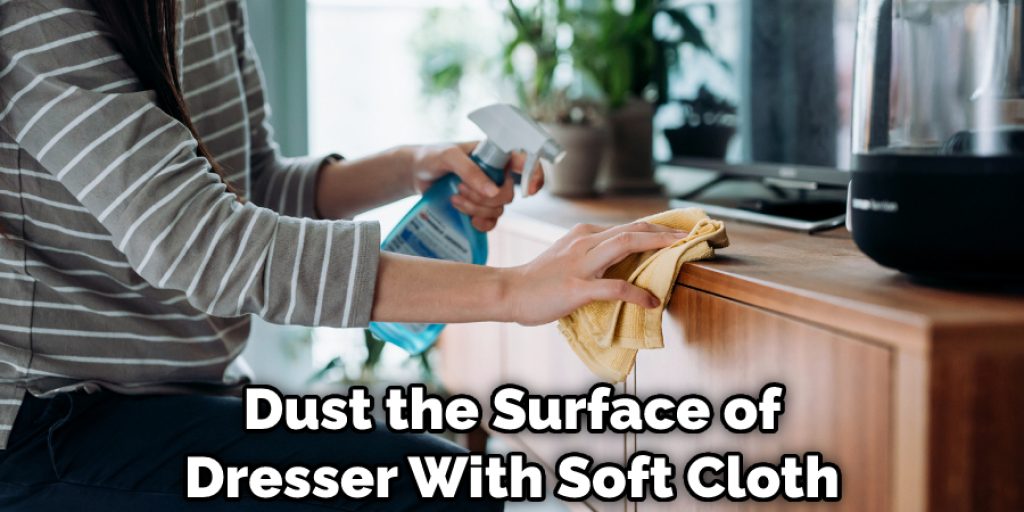
Following these simple tips, you can keep your dresser drawers looking their best for years to come. With a little bit of care, your dresser will be a staple in your home for many years to come.
How to Fix a Dresser Drawer that Won’t Close
A dresser drawer that won’t close is a common problem, but it’s fairly easy to fix. In most cases, the drawer simply needs to be adjusted to slide more smoothly on its track. To do this, first, remove the drawer from the dresser. Then, take a look at the track and see if there is any debris or buildup that could be causing the issue.
If you find anything, use a damp cloth to wipe it away. Once the track is clean, put the drawer back in and see if it slides more easily. If not, you may need to use a bit of wax or lubricant on the track.
Just a small amount should do the trick. With a little effort, you should be able to get your dresser drawer sliding smoothly again.
Frequently Asked Question
Can a Dresser Drawer Be Fixed?
Yes, a dresser drawer can be fixed. If the drawer is sticking, you can try to lubricate it with a small amount of petroleum jelly. If the drawer is broken, you can try to fix it with wood glue or a screwdriver.
How Do You Reinforce a Drawer?
One way to reinforce a drawer is to add a wooden or metal strip along the inside of the drawer, front, and back. You can also add a support rail along the bottom of the drawer. This will help keep the drawer from sagging or bending over time.
How Do You Make Old Dresser Drawers Slide Better?
If your dresser drawers are sticking, you can do a few things to make them slide better. First, try spraying some WD-40 or a similar lubricant into the tracks. If that doesn’t work, you can also try using a bar of soap or a pencil to help them slide more smoothly.
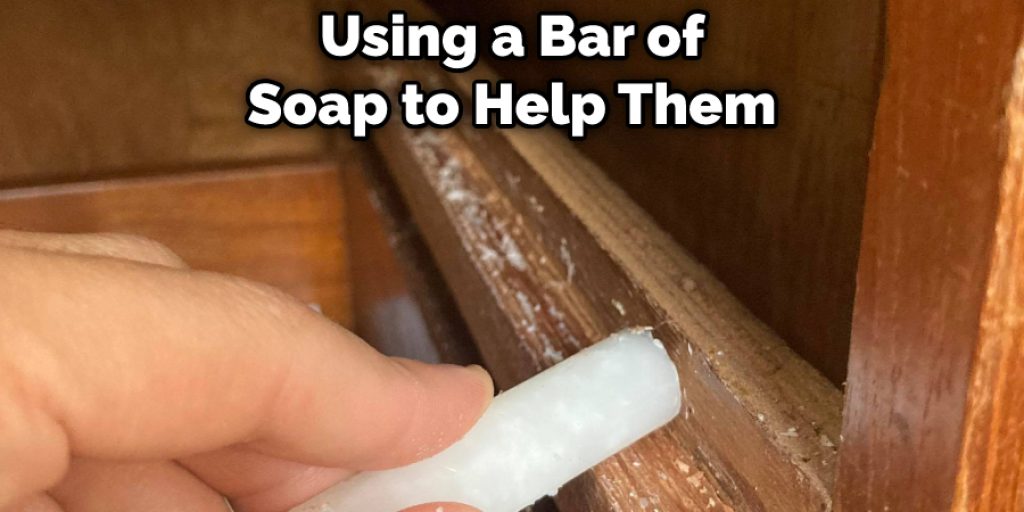
Conclusion
So there you have it – our top tips for repairing dresser drawers. We hope you found this post helpful and that you are now able to fix those pesky drawer problems yourself! If not, or if you’re still feeling unsure, don’t hesitate to get in touch with us for more help. Thanks for reading our post about how to repair dresser drawers.




